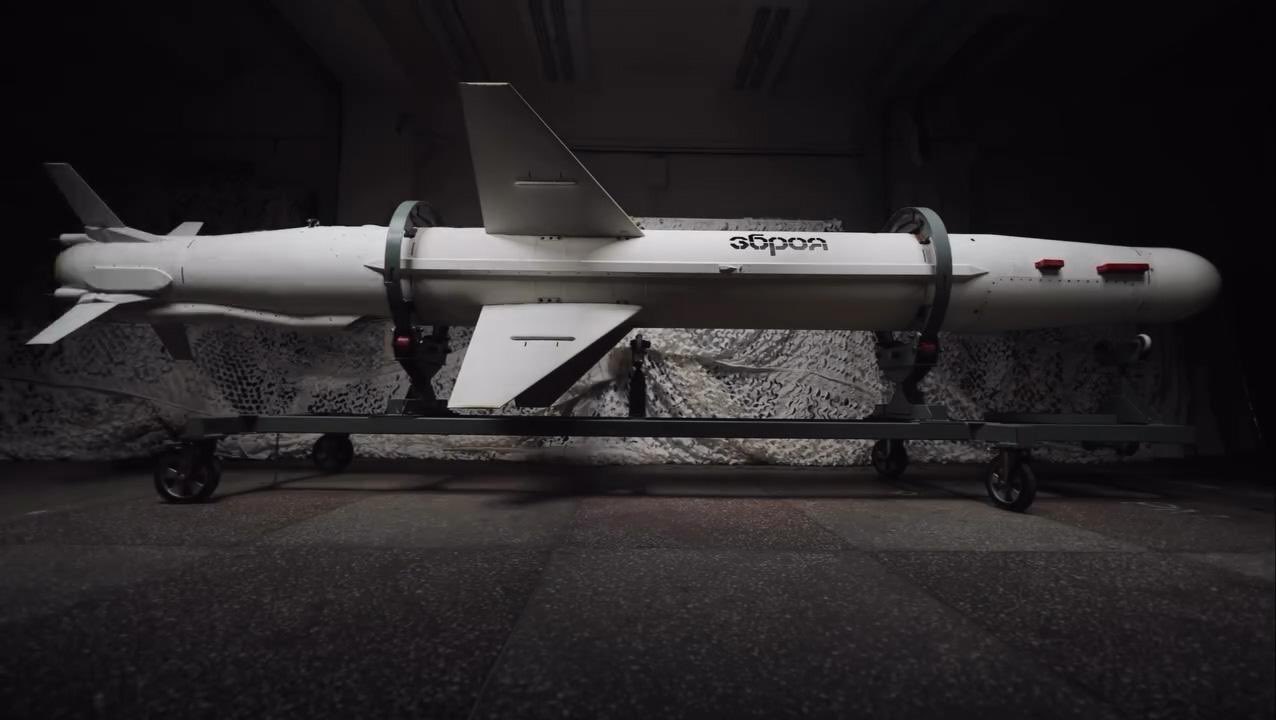Ukraine’s domestically developed Neptune missiles were used in more than 50 successful strikes against Russian targets over the past year, according to a spokesperson for the Ukrainian Navy.
The Neptune’s evolution from the anti-ship missile that sank Russia’s Moskva flagship into a system capable of striking 1,000 kilometers inside Russia marks one of Ukraine’s most significant homegrown weapons advances since the full-scale invasion began.
Navy spokesperson Dmytro Pletenchuk said the Ukrainian-made missiles had proven effective and remain in exclusive use by the country’s Naval Forces.
“Our Neptune is truly feared on the other side - and not without reason,” Pletenchuk said on air with Den.LIVE. “We don’t usually disclose its use, but sometimes, when a particular strike becomes widely discussed in the media, we can confirm - yes, that was us.”
He added that the results of the Neptune strikes have been significant, without adding detail, but underscoring Ukraine’s growing ability to hit high-value military and industrial targets deep inside Russia.
Neptune: from anti-ship weapon to strategic deep-strike capability
The R-360 Neptune is a Ukrainian subsonic cruise missile developed by the Luch Design Bureau. Work began in 2015 to create an anti-ship weapon based on the Soviet Kh-35 missile. The system entered service with the Ukrainian Navy in 2021, though only limited numbers existed when Russia launched its full-scale invasion in February 2022.
The missile gained international attention in April 2022, when two Neptune missiles struck and sank the Russian Black Sea Fleet flagship Moskva - one of Moscow’s most significant naval losses of the war.
Ukraine has since expanded the Neptune's capabilities beyond its original anti-ship role. The missile has been adapted for ground strikes and its range extended from an initial 300-400 kilometers to 1,000 kilometers in the "Long Neptune" variant.
Ukrainian President Volodymyr Zelenskyy confirmed in March 2025 that the upgraded missile had already struck targets at its maximum range. Defense Minister Rustem Umerov reported in late 2024 that Ukraine had successfully scaled up production, manufacturing the first 100 missiles that year.
Recent Neptune strikes include the March 2024 hit on the landing ship Kostiantyn Olshanskyi in occupied Crimea and a likely March 2025 strike on Russia's Tuapse oil refinery that burned for 48 hours.
In September 2025, Ukraine's General Staff confirmed using four Neptunes to strike the Elektrodetal plant in Russia’s Bryansk Oblast, a facility which supplies components to more than 1,500 enterprises in the Russian defense industry.




